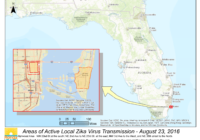Valley Fever on the go, possibly helped by small cute mammals

Coccidioidomycosis (aka “cocci”, or Valley Fever) is a fungal infection caused by two species of Coccidioides fungi, infecting thousands of people in the southwestern US, and parts of Mexico and Central and South America. Recently, the fungi was detected in south-central Washington, both in clinical isolates as well as soil samples. Below, I summarize what we know about this disease and the pathogens causing it, the new area of detection, and the potential next steps forward in protecting the public from these bothersome fungi.






